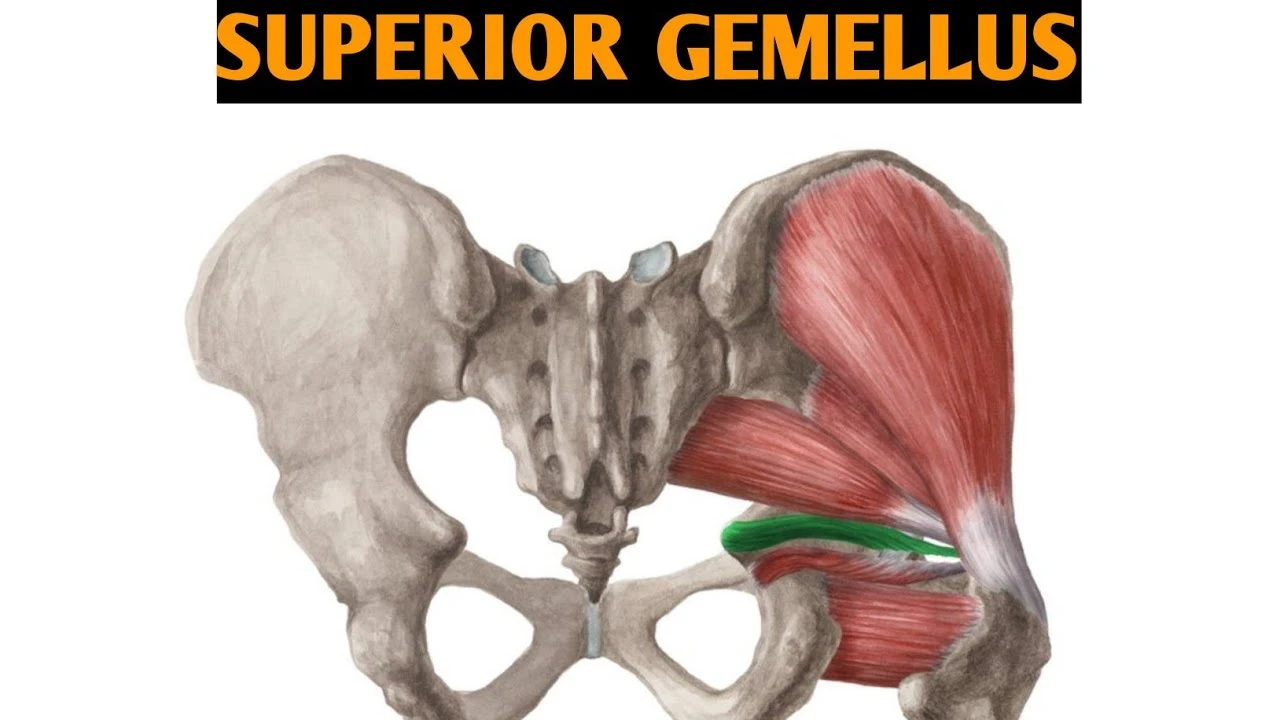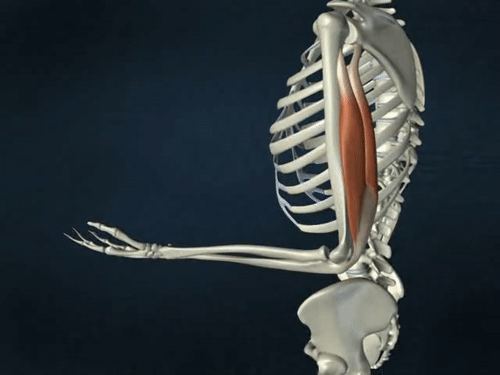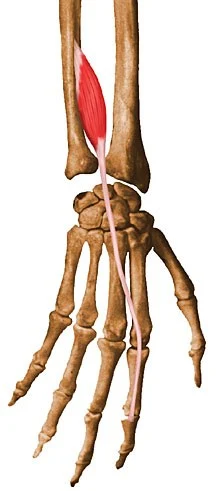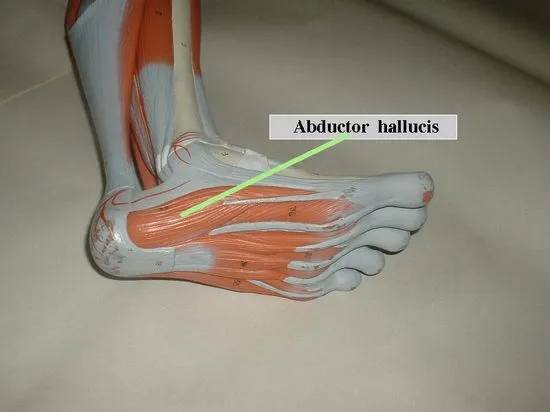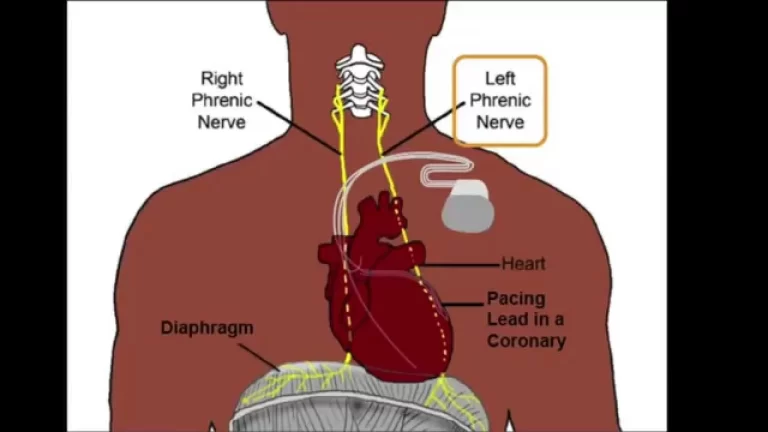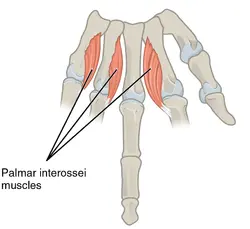Superior gemellus muscle
What is the Superior gemellus muscle?
A small muscle deep within the posterior pelvis is the superior gemellus. The superior gemellus is a member of the deep gluteal muscles group and is located beneath the larger muscles of the hip and thigh, specifically the gluteus maximus. This deep gluteal group’s other muscles are; piriformis, obturator internus, obturator externus, gemellus inferior, and quadratus femoris. These muscles share the normal capability of balancing out the hip joint and externally rotating and abducting the thigh.
The triceps coxae are made up of the superior gemellus, inferior gemellus, and obturator internus muscles. The appearance of superior and inferior gemelli is similar.
Origin of Superior gemellus muscle
Gemellus superior starts from the external (gluteal) surface of the spine of the ischium
Insertion of Superior gemellus muscle
It has a mixed insertion with the Obturator internus’ upper ligament.
Relations
The Triceps muscles (coxae muscle), or the three-headed muscle of the pelvis, are found profound to the gluteus maximus, occupying the space limited by the piriformis muscle superiorly and quadratus femoris inferiorly. From better than substandard, the triceps coxae muscle is made out of the predominant gemellus, obturator internus, and inferior gemellus. These three muscles have their beginnings, yet share a typical inclusion. In certain examples, the three muscles embed into the femur freely in the equivalent superoinferior request they stretch out through the gluteal area of the pelvis.
The larger of the two gemelli is the superior gemellus. Its proximal and distal portions are situated, respectively, inferiorly and deeply below the piriformis. Piriformis muscle fibers can sometimes partially blend in with the superior gemellus, allowing the triceps coxae common tendon to insert into the femur.
The hip and thigh neurovascular bundle carry the pudendal nerve, sciatic nerve, posterior femoral cutaneous, inferior gluteal artery, and inferior gluteal nerves between the piriformis and superior gemellus, and travels from the pelvis to the lower limb.
Innervation
The nerve that connects the superior gemellus to the obturator internus nerve (L5-S1/2) is supplied by the sacral plexus.
Blood supply
The internal iliac artery’s branches supply the muscle; the internal pudendal artery, inferior gluteal artery, and occasionally the superior gluteal artery.
Function of Superior gemellus muscle
As a member of the triceps coxae muscle group, the superior gemellus is responsible for external (lateral) thigh abduction and rotation. The leg’s position determines the movement produced when this muscle group contracts.
External (lateral) rotation – when the lower limb is in a physical position, the triceps coxae act to externally turn the proximal femur. The triceps coxae muscles, along with the gluteus maximus, a portion of the gluteus medius, the piriformis, the obturator externus, and the quadratus femoris, externally rotate the lower extremity during the carry-through phase of the gait cycle, making this function crucial.
Abduction: The action of the triceps coxae pulls the proximal femur medially when the hip is flexed at 90 degrees. The thigh is abducted as a result of the corresponding lateral movement of the distal femur. This kidnapping from a situated position is the development you perform while situating your lower limb out of the vehicle, for instance.
Furthermore, connecting the proximal finish of the femur and the hip bone, the prevalent gemellus assumes a part in balancing out the head of the femur in the hip bone acetabulum of the pelvis.
Clinical relevance
Alongside its twin: The hip joint is deeply stabilized by the gemellus superior, along with the piriformis and obturator internus. Together with the gluteus maximus, these four muscles resist the hip’s anterior forces.
It is hard to survey the gemellus superior in detachment due to its vicinity to the next external rotators of the hip. In a typical hip evaluation, the external rotators would be tested.
Superior gemellus muscle stretching
Bent over lunging hip flexor stretch
Kneel while bending your right knee and step backward with your left leg to perform this stretch. With your elbows positioned to the outside of your right knee, bend forward and place your hands on the floor. While attempting to maintain equilibrium on the ball of the left foot, straighten the left leg and lower the hips. On the opposite side, perform the same activity. Perform 10 counts on the two sides.

Superior gemellus muscle strengthening exercise
Dowel hip internal rotation
This hip-assisted stretching exercise focuses on the external rotators of the hip during hip flexion. A chair or bench, a broomstick, or a dowel are all you’ll need. To wrap your leg around the dowel, sit down and place it against your inner heel and outer thigh. Maintaining contact and employing your hands, drive the hip into end-range internal rotation. After holding this position for up to 30 seconds or three to five deep breaths, perform as many repetitions as necessary. An internal rotation is normally around 45 degrees. Maintain a 90-degree bent on the knee.
Three-point hip rotation
On a soft mat, maintain your hands and knees position. While keeping your knee flexed, bring your left knee closer to your chest. After that, bring your knee back to your chest and slowly rotate your leg externally to the left, then to the back. Perform eight to ten repetitions on the opposite leg in total. Maintain a smooth, gradual, and pain-free stretch.

FAQ
Why is it hurting my superior gemellus?
Gemellus pain syndrome is the condition that affects the gemellus the most frequently. This condition is generally a consequence of the hip flexor muscles being excessively close, which causes the profound hip rotator muscles to overcompensate and become exhausted.
What distinguishes piriformis from gemellus superior?
In comparison to the gemellus superior, the piriformis is larger and superior. The piriformis begins in the sacrum, while the gemellus prevalent starts on the ischial spine.
What distinguishes piriformis from gemellus superior?
In comparison to the gemellus superior, the piriformis is larger and superior. The piriformis begins in the sacrum, while the gemellus prevalent starts on the ischial spine.
What are the Gemellus superior’s nerve roots?
The anterior (ventral) divisions of the L5, S1, and S2 nerve roots of the sacral plexus from the nerve to the superior gemellus and obturator internus. The fascia of the lateral side wall of the ischioanal fossa and the obturator internus and superior gemellus muscles are both supplied by this nerve.
Where joins the superior gemellus?
Insertion. The superior gemellus muscle crosses evenly and then embeds into the centerpiece of the medial part of the greater trochanter, known as the trochanteric fossa, a smooth faceted area of bone limited posteriorly by the intertrochanteric crest.

